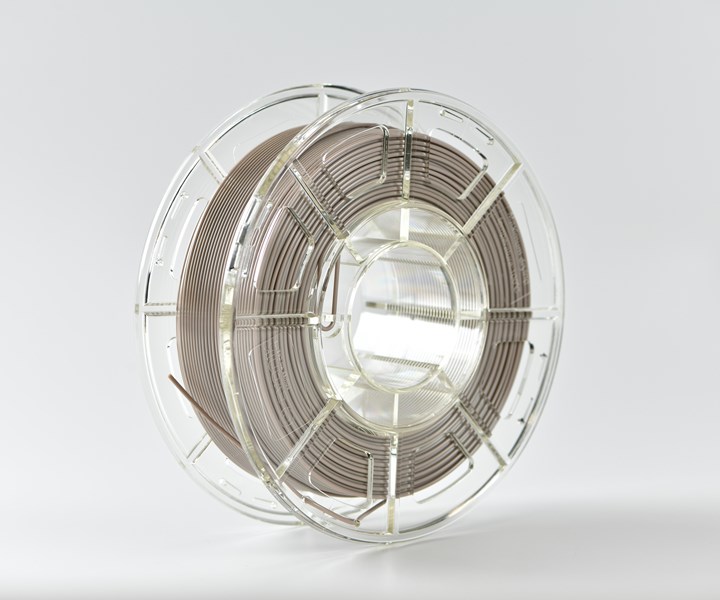Materials: Implant-Grade PEEK Filament for Medical Applications in 3D Printing
The material was developed for fused filament fabrication (FFF) technology.

Evonik’s implant-grade PEEK filament for medical applications in 3D printing.
Evonik has launched a 3D-printable PEEK filament as an implant-grade material for medical applications.
Developing and manufacturing custom-made plastic implants can now be created using additive manufacturing processes that meet the requirements of ASTM F2026 (the standard specification for PEEK polymers for surgical implant applications).
Sold under the brand name VESTAKEEP i4 3DF, this PEEK filament is an implant-grade material based on VESTAKEEP i4 G, a highly viscous, high-performance polymer from Evonik. The company highlights the product’s biocompatibility, biostability, x-ray transparency, and easy handling as key features. The filament is produced under cleanroom conditions and then subjected to stringent quality management standards for medical materials.
The high-performance material was developed for fused filament fabrication (FFF) technology. The natural-colored PEEK filament, which has a diameter of 1.75 mm, is wound on 250- or 500-gram spools suitable for direct use in standard FFF 3D printers for PEEK materials.
In addition to its implant grade, Evonik is also offering a testing-grade version of its PEEK filament. The term refers to a class of material having the exact same product properties as the implant grade, but without the documentation needed for approval in medical technology applications. This offers a cost-effective way of adapting the processing characteristics of the high-performance plastic to a given 3D printer.
Related Content
-
Prices Generally Trending Upward for the Five Commodity Resins
Scheduled and unscheduled production disruptions, and projected higher feedstock costs could be key factors.
-
Prices Up for PE, ABS, PC, Nylons 6 and 66; Down for PP, PET and Flat for PS and PVC
Second quarter started with price hikes in PE and the four volume engineering resins, but relatively stable pricing was largely expected by the quarter’s end.
-
Polymer Showdown — PC/ABS vs. PC/PBT — May the Best Material Win
First in a series, experts from plastics engineering consultancy The Madison Group will pit leading thermoplastics against each other to see how they differ in processing characteristics, chemical resistance, thermal and mechanical performance, and more.






